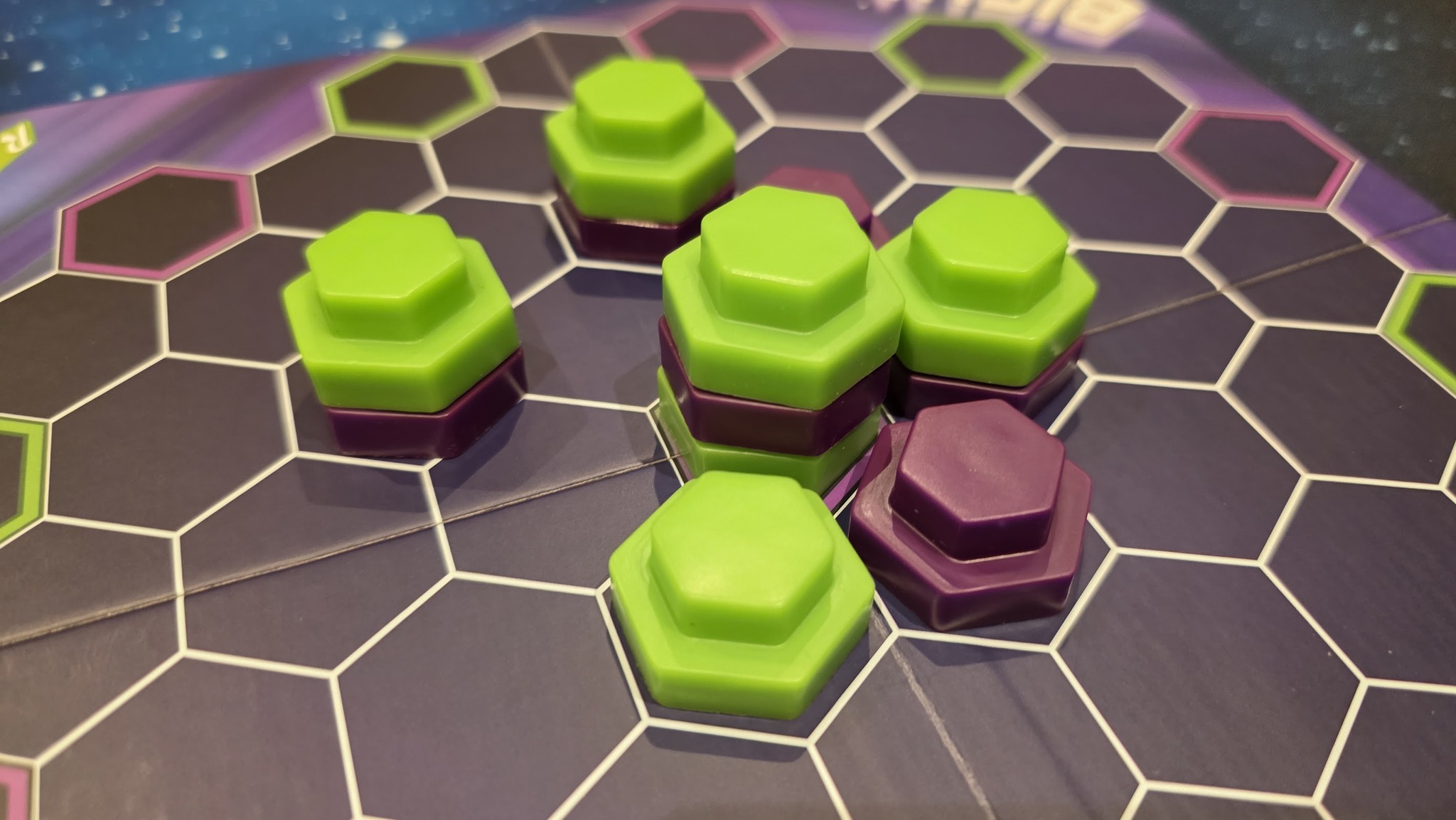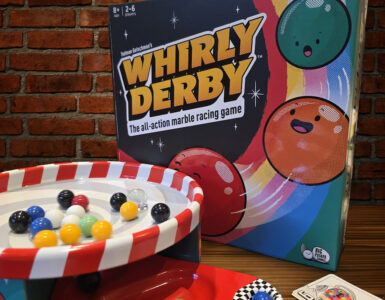We love an abstract strategy game, and we have played quite a few good ones recently, so we were really excited to try Bigly, a simple abstract strategy game from RalBru, the same designers behind the UKGE darling ButtChess and ButtChess+1, which we reviewed recently.
A game for only two players, the rules are super simple. Both players have hexagons and must be the first to occupy the centre hexagon with one of their pieces, and have three of their pieces placed around it in the adjacent hexes.
One player plays as purple and one as green (the pieces are also the same as ButtChess+1). The first turns involve laying all of your pieces, and from there, you move one square per turn. A key part of the strategy is preventing your opponent from forming the winning pattern. If they are close to having three pieces around the centre, you can block them by placing your own piece in a critical adjacent hex. You can also form a stack and place yours on top of theirs to further block.
You win immediately when you meet both conditions: your piece is in the centre, and it is surrounded by three of your other counters in the six adjacent hexes.
In theory, this all sounds great, but what became evident extremely quickly is that it is incredibly easy to reach a stalemate. In fact, of the three games that Jack (10) and I played, both the second and third ended in stalemates.

Mathematically, this is extremely likely for a number of reasons. The centre is essential to win, but as soon as someone places a piece there, the opponent can immediately start blocking the surrounding ring. If they get three of the six surrounding hexes, you are now locked out of victory without stacking but even when you start stacking you simply move away from another place and you end up back and forth countering each other. The ring around the centre is equidistant from all sides, so there is no positional advantage like in Go or Chess. Both players will likely reach the centre and its surroundings at the same time. Since the only win condition requires both the centre and three or more neighbours, and there is only one centre hex, this creates a single point of conflict. Unless someone makes a mistake or intentionally allows a win (which is unlikely in skilled play), you end up with: a ring blocked by both players, a centre occupied but surrounded by a mixture, or neither player committing to the centre early for fear of being countered.
So yes, it is highly likely, much like noughts and crosses, that games will end in stalemates. Sadly, this prevents me from recommending it, and it really needs some element of randomness, asymmetry, or a second win condition.














